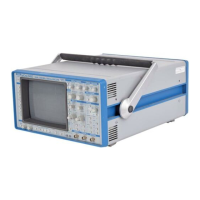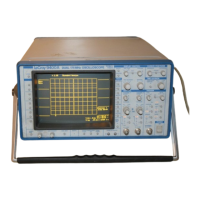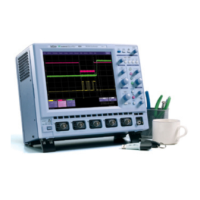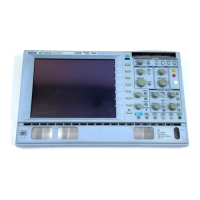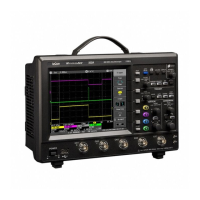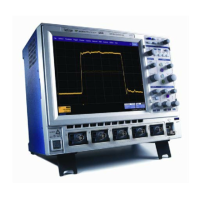12–5
GPIB/RS232 Setup
When “GPIB/RS232 Setup” is selected from “UTILITIES” the
RS-232-C port on the rear panel can be used for remote
operation of the oscilloscope, and for direct interfacing to a
hard-copy device for copying of displayed waveforms and
other screen data. See below and on next page for printer and
computer cabling.
A printer unit whose connected to the scope by RS-232-C port can
be controlled from a host computer using the scope’s GPIB port.
The oscilloscope's built-in drivers also allow hard copies to be made
without an external computer..
RS-232-C Connector Pin Assignments
DB9 Pin
No.
Line Name Description
3 T × D Transmitted Data (from the oscilloscope).
2 R × D Received Data (to the oscilloscope).
7 RTS
Request To Send (from the oscilloscope). If the software Xon/Xoff handshake
is selected, it is always TRUE. Otherwise (hardware handshake) it is TRUE
when the oscilloscope is able to receive characters and FALSE when the
oscilloscope is unable to receive characters.
8 CTS
Clear To Send (to the oscilloscope). When TRUE, the oscilloscope can
transmit; when FALSE, transmission stops. It is used for the oscilloscope
output hardware handshake.
4 DTR Data Terminal Ready (from the oscilloscope). Always TRUE.
5 SIG GND Signal Ground
Corresponds to a DTE (Data Terminal Equipment) Configuration
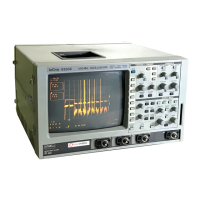
